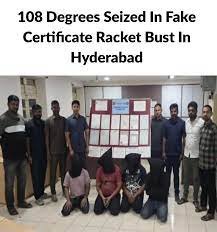Journalists are murdered in India and their killers are set free.
India ranks 14th on the list with 18 murders of journalists from 2008 to 2018. India has been listed in the index 11 times. Other countries on the index include Afghanistan, Bangladesh, Brazil, Colombia, Iraq, Mexico, Nigeria, Pakistan, the Philippines, Russia, Somalia, South Sudan and Syria. According to CPJ, 82 percent of the 324 journalist murders occurred in the 14 countries listed on the index.
Reporters Without Borders (RSF) listed India at 138th position in its World Press Freedom Index in 2018, saying it fears that journalists are “the target of online smear campaigns by the most radical nationalists who defame them”. And even threaten physical retaliation.” Since 1992, 48 journalists have been killed in India and 34 have been targeted for murder. According to the CPJ database, 32 of the 34 murders were committed with “complete impunity”. As NDTV reports, in 23 years, only one journalist’s murder of Midday’s Jyotirmoy Dey has been tried and convicted for the murders.
In 2017, India was ranked 12th in the Global Impunity Index with 13 journalists killed with “complete impunity” from 2007 to 2017. Most of the journalists were targeted for reporting local corruption, crime and politics outside the main urban areas. The murders involved the shooting of veteran journalist and editor Gauri Lankesh, who was shot dead on September 5, 2017 in Bangalore by three unidentified assailants, Hindustan Times reported. His killing sparked national outrage over the safety of journalists. Lankesh was famous for criticizing right-wing extremism and communal violence in his Kannada-language weekly Gauri Lankesh Patrika.
CPJ observed that the situation in India has become “worse” in 2018. In 2018, three journalists were murdered for their work: Naveen Nischal of Dainik Bhaskar, Sandeep Sharma of News World and Shujaat Bukhari of Rising Kashmir. In Arrah on March 25, Naveen Nischal and another reporter, Vijay Singh, were run over by an SUV, allegedly driven by the village headman, Mohammad Harshu. Nischal’s crime: reporting on child marriage.
The very next day, March 26, Sandeep Sharma died when a truck rammed his motorcycle. The News World’s bureau chief Vikas Purohit said Sharma had received threats and beaten up in the past for publishing stories on illegal sand mining and police corruption. Shujaat Bukhari, a senior journalist and editor, was shot dead on June 14, along with two police officers deputed for security, for their reporting on the situation in Kashmir. These brutal killings are symptomatic of a bigger problem of silencing journalists. In addition to outright killings, attacks on journalists are increasingly happening. According to The Hoot’s “India Freedom Report: Media Freedom and Freedom of Expression in 2017” report, 11 journalists were murdered, 46 assaulted and 27 cases of police action registered in 2017.
When not killed with violence or murder, journalists are being prosecuted for heavy civil defamation, such as the recent report by Reliance Group against Indian news channel NDTV over transparency in the Rafale jet deal between Reliance and Reporting on the shortfall has claimed US$1.35 billion. their French counterpart. This tactic is often used to intimidate journalists and harass them through legal fees. The media is being heavily censored by the government and their access to official events is restricted. In addition, there has been a significant increase in internet shutdowns across the country, rising from 31 in 2016 to 77 in 2017. In India, when the story cannot be killed, the storyteller is silenced.













